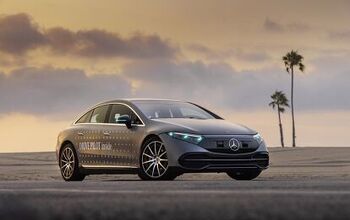Lexus CT200h Debuts With High Hopes for Europe [Paris 2010]

Lexus has just officially debuted the production version of the CT200h hybrid hatchback at the Paris Auto Show. And while Lexus does hope to significantly expand the premium compact segment in the United States, it expects huge growth in Europe with the CT projected to double the Toyota luxury brand’s sales.
The CT is the first “sport oriented” Lexus hybrid, with a focus on dynamic handling rather than outright acceleration. In fact, using a version of the Toyota Prius’s Hybrid Synergy Drive engine, it makes 134-hp and accelerates to 60 mph in 9.8 seconds. What it can also do, however, is get a combined average of 42-mpg. For the record, that’s 8-mpg better than its closest competitor here in North America.
Along with a functional hatchback design, the CT features a more youthful appeal with more exciting design cues. Inside, it’s pure Lexus luxury.
To put the focus on driving dynamics, the car features a four-mode control system that allows the driver to switch from modes labeled: EV, Normal, Eco and Sport. In sport mode, the car not only gets a more sensitive throttle and more powerful from the electric motor, but it also features tighter steering to help aid in the driving experience.
Look for AutoGuide’s First Drive of the CT200h on October 12th.
GALLERY: Lexus CT200h Paris Auto Show Debut
GALLERY: Lexus CT200h

With AutoGuide from its launch, Colum previously acted as Editor-in-Chief of Modified Luxury & Exotics magazine where he became a certifiable car snob driving supercars like the Koenigsegg CCX and racing down the autobahn in anything over 500 hp. He has won numerous automotive journalism awards including the Best Video Journalism Award in 2014 and 2015 from the Automotive Journalists Association of Canada (AJAC). Colum founded Geared Content Studios, VerticalScope's in-house branded content division and works to find ways to integrate brands organically into content.
More by Colum Wood































Comments
Join the conversation